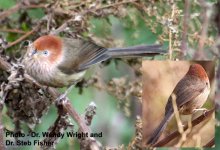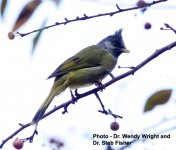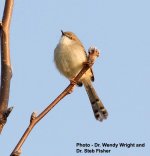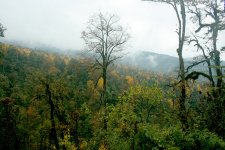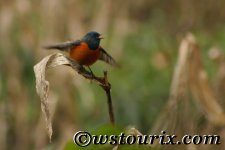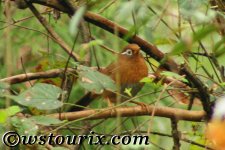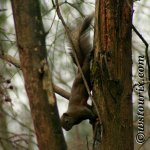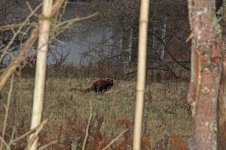china guy
A taff living in Sichuan
I've just got back from 3 days with an ecological survey team from Sichuan University and Monash University, Victoria Australia.
Previous to my meeting with them they'd been to the very south of Sichuan, close to the Yunnan border - around a 100km SE of Xichang. Part of my task was to confirm some ID's of photos that Dr. Wendy Wright and Dr. Steb Fisher had taken. Some great birds down there - some which don't appear on the normal type of Sichuan trip list. With the warm weather this area enjoys during this time of year, an interesting winter birding destination - within striking distance of the Black-necked Crane wintering site just over the Yunnan border at Dashanboa. Certainly under-birded with a possibility for some good discoveries.
Thanks to Wendy and Steb I can show some of their photos.
1 - the best bird first - Brown-winged Parrotbill. Only three pics - all Yunnan shots - of this bird at OBI, two coming from John and Jemmi.Their pic here - http://orientalbirdimages.org/search.php?p=2&Bird_ID=1462&Bird_Family_ID=&pagesize=1 - shows the same strange bill coloration - a broad black strip on top of the upper mandible - as the pictured bird
2 - Crested Finchbill - I've only seen this bird in Yunnan, good to see it's also still to be found in Sichuan.
3 - Grey-breasted Prinia - another bird we've never seen in our normal Sichuan haunts
Previous to my meeting with them they'd been to the very south of Sichuan, close to the Yunnan border - around a 100km SE of Xichang. Part of my task was to confirm some ID's of photos that Dr. Wendy Wright and Dr. Steb Fisher had taken. Some great birds down there - some which don't appear on the normal type of Sichuan trip list. With the warm weather this area enjoys during this time of year, an interesting winter birding destination - within striking distance of the Black-necked Crane wintering site just over the Yunnan border at Dashanboa. Certainly under-birded with a possibility for some good discoveries.
Thanks to Wendy and Steb I can show some of their photos.
1 - the best bird first - Brown-winged Parrotbill. Only three pics - all Yunnan shots - of this bird at OBI, two coming from John and Jemmi.Their pic here - http://orientalbirdimages.org/search.php?p=2&Bird_ID=1462&Bird_Family_ID=&pagesize=1 - shows the same strange bill coloration - a broad black strip on top of the upper mandible - as the pictured bird
2 - Crested Finchbill - I've only seen this bird in Yunnan, good to see it's also still to be found in Sichuan.
3 - Grey-breasted Prinia - another bird we've never seen in our normal Sichuan haunts
Attachments
Last edited:




